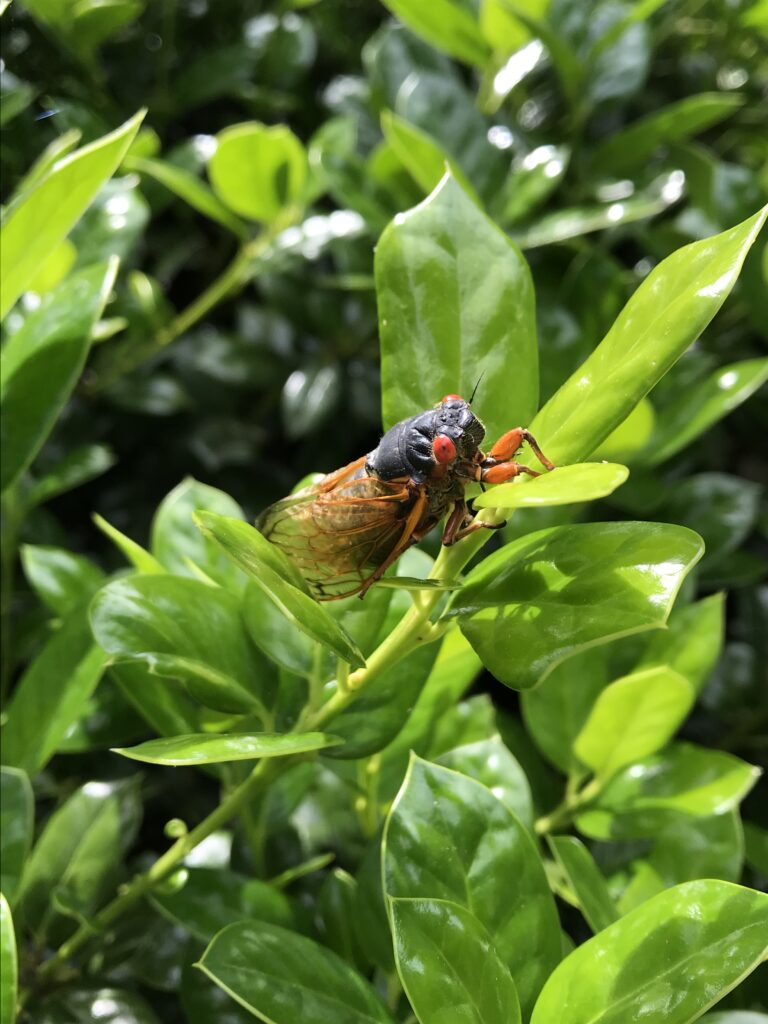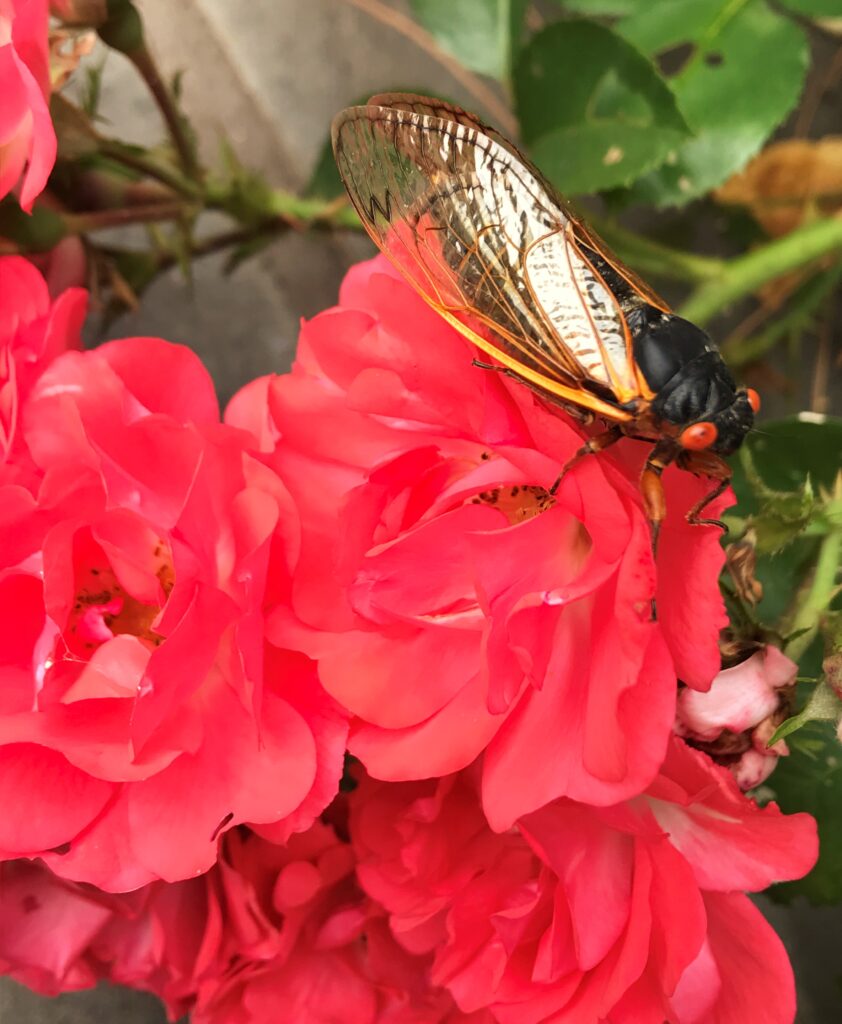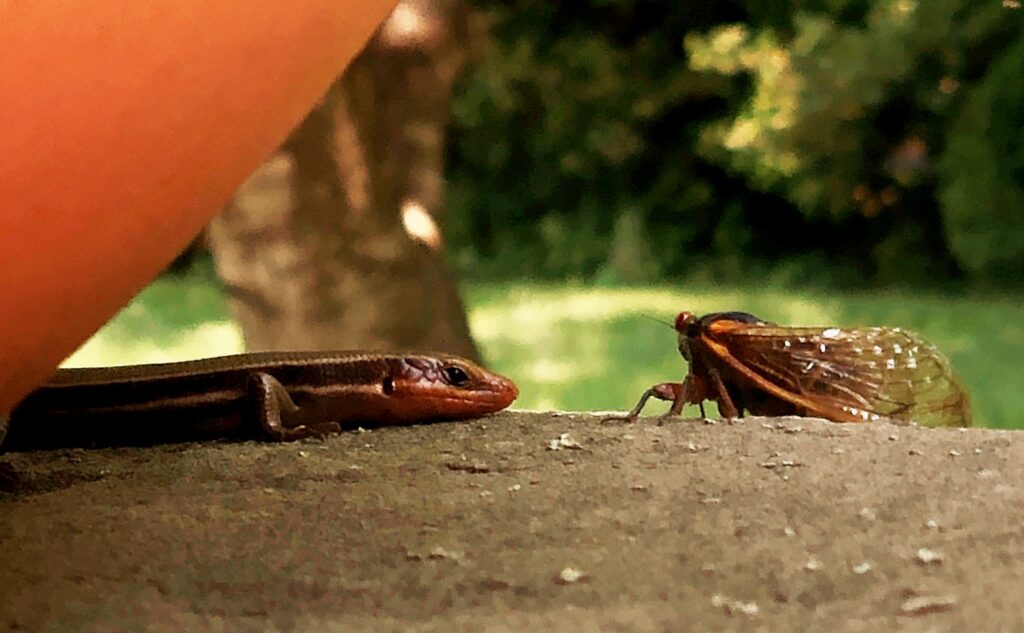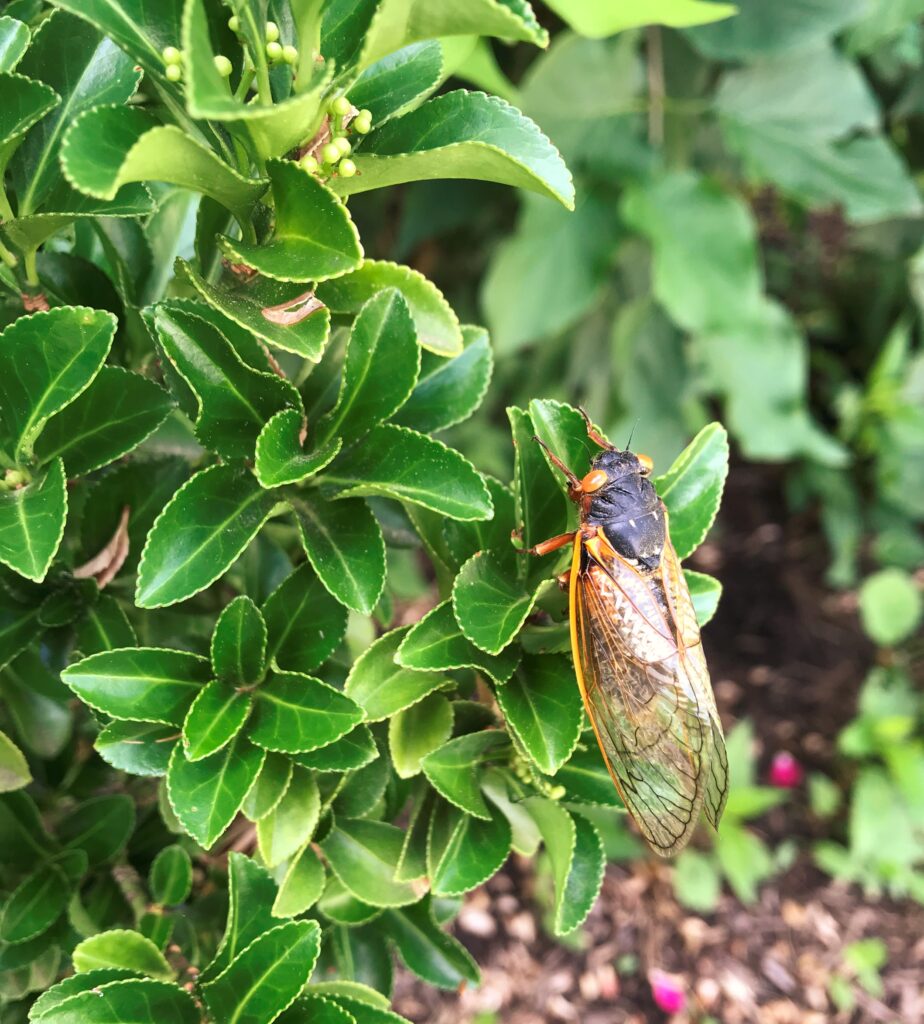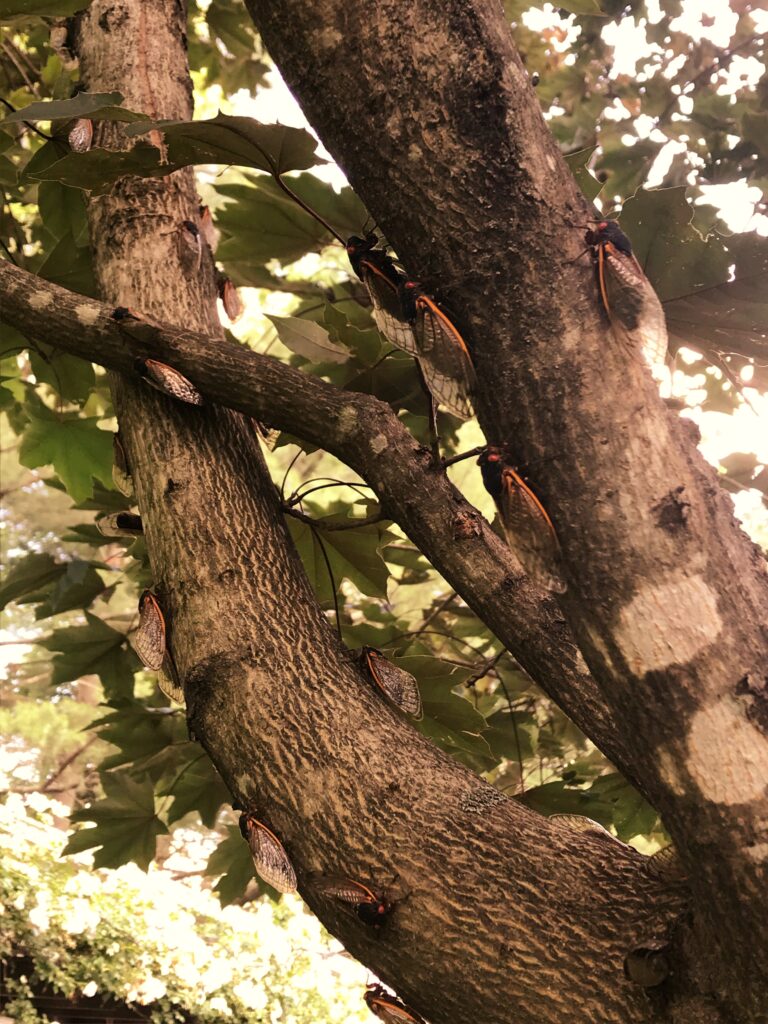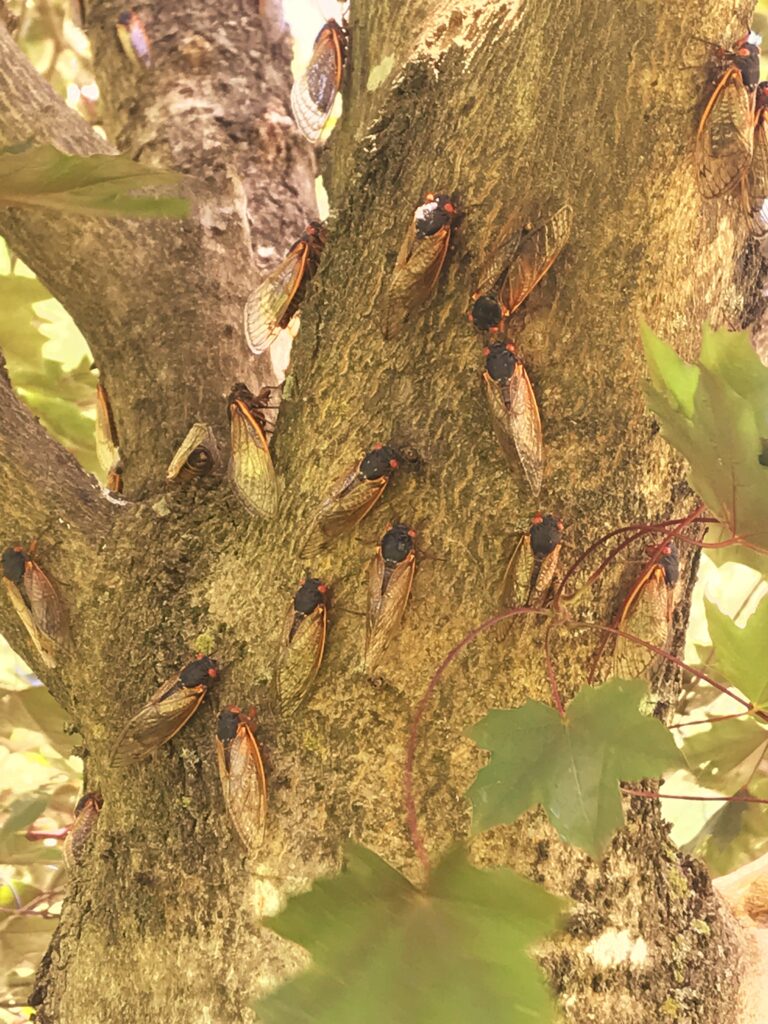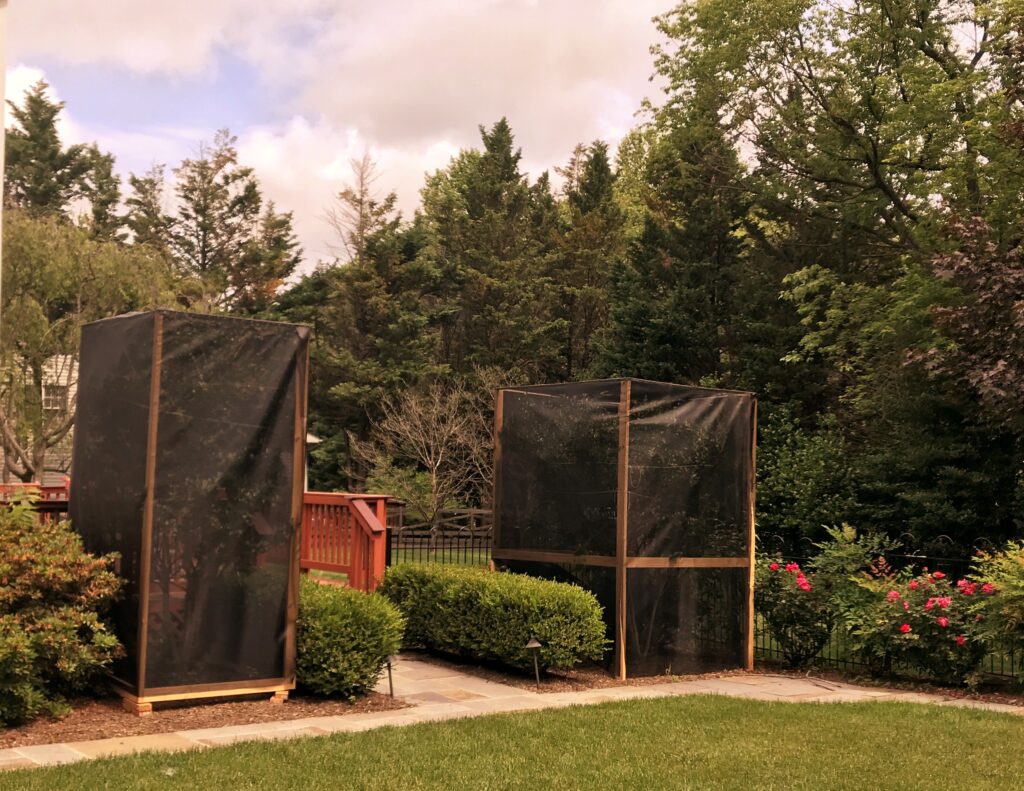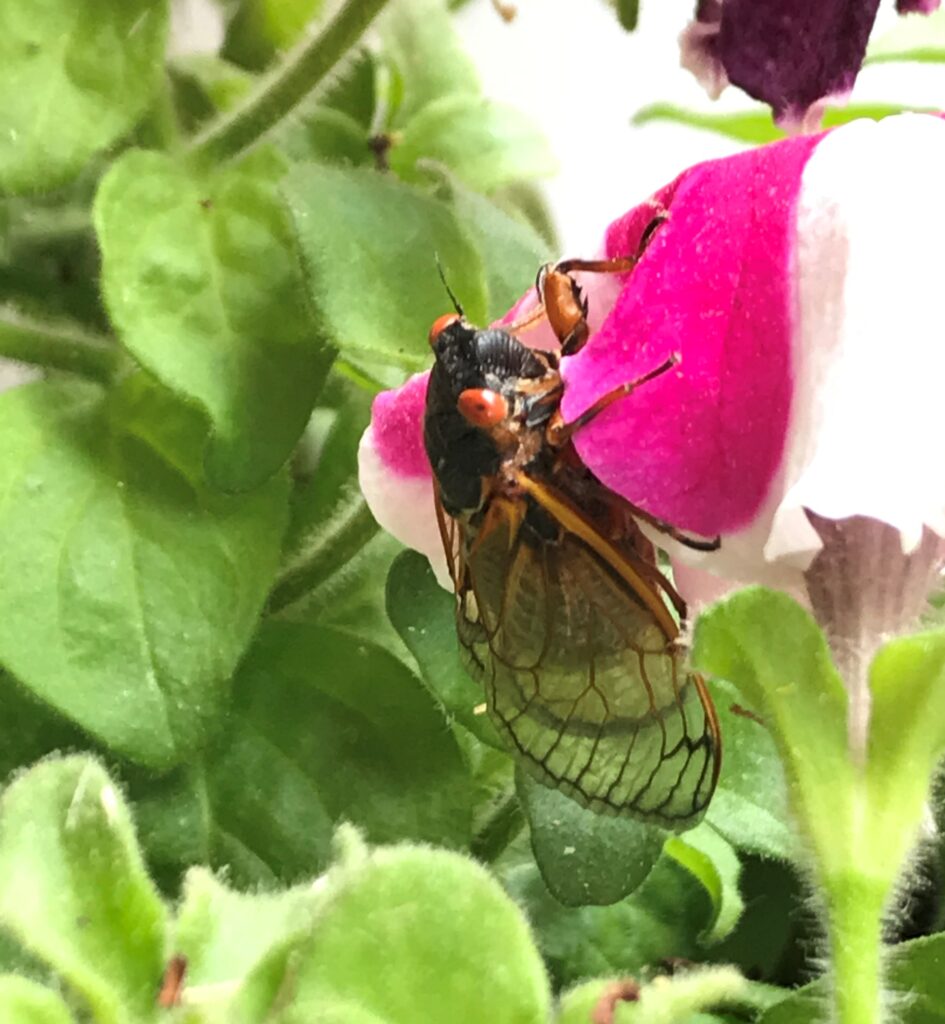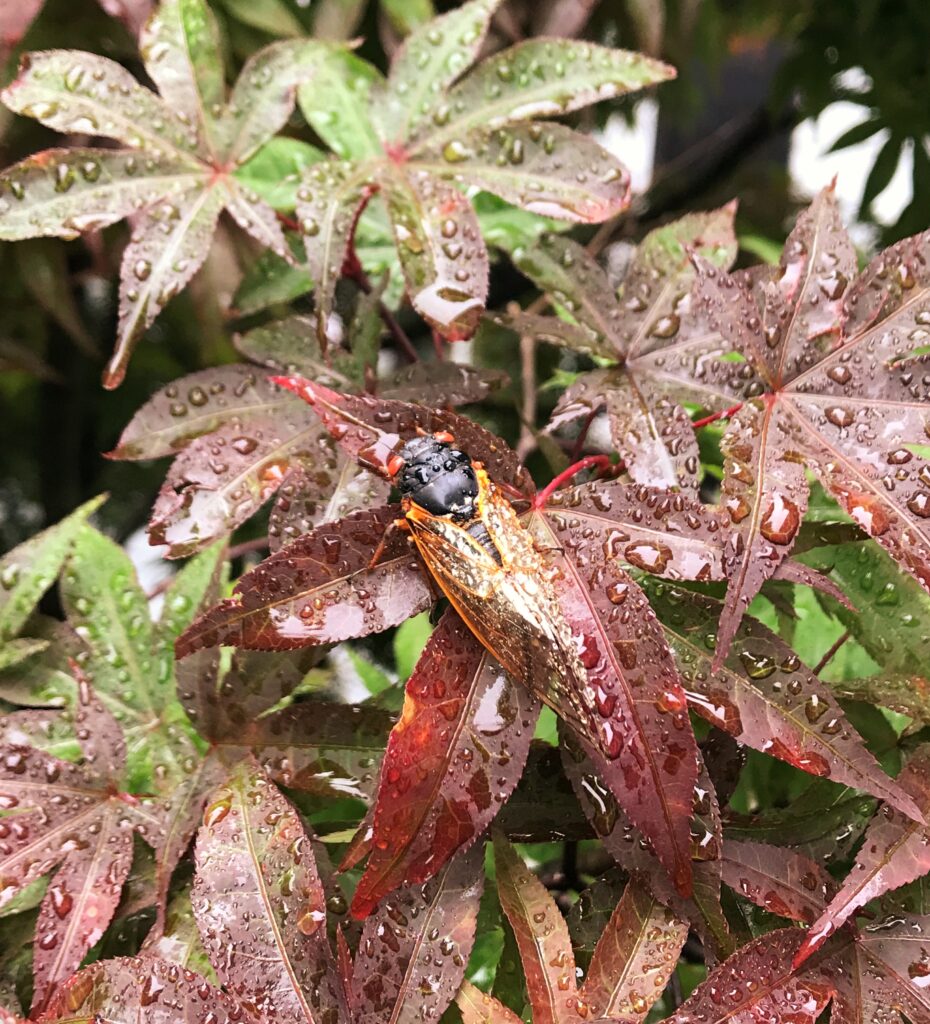The loudest, craziest days of Brood X are behind us now in Northern Virginia. Peak cicada activity occurred here during the first two weeks of June. When we left for Rochester over Memorial Day Weekend, we hadn’t spotted a single cicada in my mother’s back yard. When we returned, even that area was a teeming hotbed of Brood X action.
The big insects were everywhere. Perched, with plenty of company, on trees, flowers, foliage fences and outdoor furniture. Slogging through the grass in droves. Struggling on their backs, trying to right themselves on every paved surface. And flying, flying, flying. Careening clumsily into people and pets. It was the rare dog walk that didn’t require stopping to detach multiple cicadas from clothing or skin. They dotted car tires. They caused mechanical problems in the airplane that was to fly the White House press corps overseas for President Biden’s first European trip. And oh, the noise, noise, noise. It was especially loud in the heat of bright sunny days. It cascaded in great waves, building to a crescendo, then diminishing. Rising and falling, again and again. The most apt comparison is probably the rapidly pulsing sound made by UFOs in old sci-fi movies. Except instead of one small spindly flying saucer, there were millions. In the midst of the corporate choirs, nearby individual cicadas could also be distinguished.
We oversaw and enjoyed a wide variety of cicada encounters. My daughter and I watched a cicada face off with a skink atop a pillar in our back yard. As the striped lizard lay poised and motionless, the insect plodded over with typical Brood X unhurried determination. Once a hair’s breadth of being nose-to-nose, the two eyed one another with what appeared to be careful consideration. Friend? Foe? Prey? Potential sex partner? Perhaps none of these options, the cicada calculated, then made a painstakingly slow three-point turn and proceeded in the opposite direction. The skink remained perfectly immobile.
I found one cicada with eyes of golden yellow instead of the usual bright red. In 2004, a rare blue-eyed fellow dropped by our front porch, but we saw none this year. A blue eyed cicada is statistically a one-in-a-million occurrence. However, considering that up to 1.5 million members of Brood X may emerge per acre, encountering a blue-eyed one is more common than it sounds.
One tree in my mother’s yard, a maple with leaves of greenish purple, hosted a veritable Brood X traffic jam. During the first week of June, the insects were making their way up the trunk and into the bigger branches. The next week, they were higher up in the smaller limbs that could be more easily sliced open by the females as they deposited their eggs.
These cicada-made slits at the ends of narrow branches cause them to weaken and break. Mature trees typically suffer no permanent damage, but younger, smaller trees are more vulnerable. We were concerned for the health of two crepe myrtles we planted a few years ago by my mother’s back deck. Before we left for New York, my husband constructed a wooden framework around each tree that could be covered with screening, if needed. Maybe it wouldn’t be necessary, we reasoned. But when we returned to see the pronounced cicada activity on the adjacent maple, we proceeded with the screening. As we see brown patches developing on surrounding trees, and clumps of maple leaves littering our front yard, we’re glad we did.
Brood X is still with us, but now in numbers that are drastically decreased. The roar of the crowd has vanished, but the buzzing of a tardy few can still be heard. These are the days of the stragglers, the late-bloomers, the procrastinators. I have a special appreciation for the last of these awkward winged visitors. After all, they won’t be back again for a long time.

